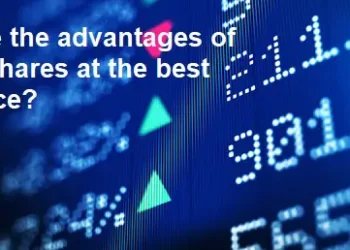Although investing is a positive activity, it cannot be denied that it also carries risks. The level of risk can be different depending on where you allocate your investment funds. Does the asset you choose have high, low or moderate risk?
Asset allocation is one of the additional skills that are important and even must be understood and possessed by every investor before starting to invest. Asset allocation is generally done to minimize investment risk. However, on the other hand, asset allocation can also be used to optimize the return on the investment itself.
Then, how do you allocate assets correctly? Let’s look at the following discussion!
Definition of Asset Allocation
Asset allocation or asset allocation is one method for managing risks and returns in an investment portfolio. Investors can allocate assets to optimize profits while still minimizing investment risk.
Asset allocation is done by dividing investment funds into several types of assets with different risks. Investors can adjust the allocation of funds in accordance with acceptable risk or in accordance with the investor’s risk profile.
This method is also often referred to as diversification. In fact the term diversification may be more popular among investors in general. Whereas asset allocation is more familiar to mutual fund investors.
How to Allocation of Assets
You may be confused about how to do the appropriate asset allocation. But, asset allocation is basically not difficult. To be able to do it well, you must first know the 3 levels of asset risk and the types of assets.
1. High risk assets
Assets with high risk are types of assets that can provide quite large losses compared to other assets. Examples include gold, stocks, junk bonds and others.
In addition, in mutual funds, the meaning of high-risk assets is no different. It’s just that the types of assets with risk in mutual funds are different from the assets above. Mutual fund assets that fall into the high-risk category are stock mutual funds.
Despite using the word stock behind it, mutual funds carry a much lower risk than direct stock investments. Even in general asset categories, equity mutual funds can be said to be in the low or moderate risk asset category. However, among mutual fund assets, equity funds are the riskiest.
2. Low risk assets
Low-risk assets are not understood as assets that provide low losses, but types of assets that rarely or almost never give investors losses. Examples are deposits, money market instruments, government bonds, money market mutual funds and others.
Low-risk assets are assets that almost never give investors a loss. And you could even say it’s a “definite” profitable asset. Losses on low-risk assets will only occur when extreme things happen, such as banks going bankrupt, governments going bankrupt and others.
3. Moderate risk assets
Moderate risk assets are assets that are still likely to provide uniqueness to investors, but this rarely happens. Examples of assets with moderate risk are corporate bonds and fixed income mutual funds.
Even though it is said to be an asset with moderate risk, basically this risk rarely befalls investors. Even though there are actually incidents where corporations go bankrupt and experience defaults on bond investors. However, the number is so small that it is rarely heard of.
Now, after knowing the various types and levels of asset risk, you can allocate your investment funds to these assets. Basically there are 3 general ways of asset allocation, namely:
1. Allocating capital to high-risk assets with the largest percentage, then the rest is allocated to moderate and low-risk assets. This method aims to get bigger profits, but you also have to be prepared for the risks that might be obtained, because the risks are also relatively large.
2. Allocating capital to moderate assets with the largest percentage and the rest is divided into high-risk assets and low-risk assets. The goal is to strike a balance between potential risks and rewards.
3. Allocating funds to low-risk assets with the largest percentage and the remainder is divided into moderate assets and high-risk assets. The goal is to keep the risk as low as possible, while still being able to make a profit.
If you use the first method, it means that you are an aggressive type of investor, who prioritizes profits by taking bigger risks. Meanwhile, if you choose the second method, you are a moderate investor, wanting to make more profits but also don’t want to lose big. And if you choose the third fund allocation method, then you are a conservative investor. You prefer to make low but sure profits, than high profits but full of risk.
Conclusion
Asset allocation, this is a risk diversification method by placing a number of funds to purchase more than one asset with quite a variety of ratios depending on the needs of the fund owner so that the concept can reduce losses if one of the assets does not have good growth, it does not rule out the possibility for assets Others have positive prospects. That’s why management is needed for the allocation. For many business actors, asset allocation is an area of management that must always be oriented as a method of reducing the impact of asset ownership risks.









